Enhancing Landscape & Architectural Photography with ImageColorizer
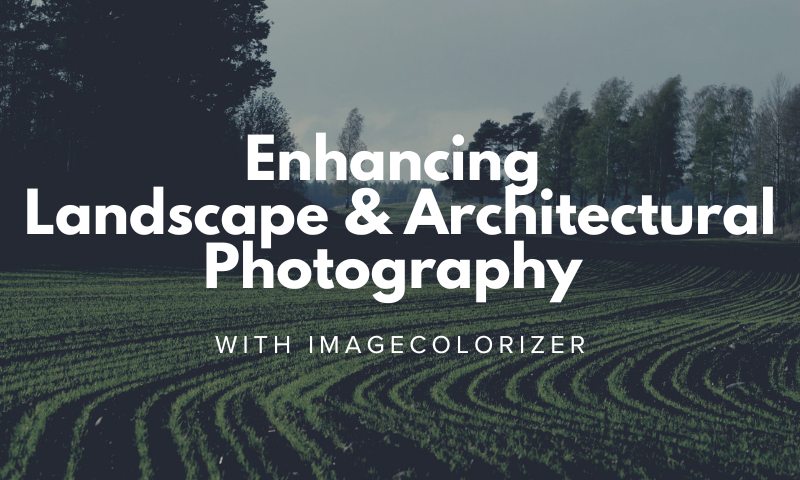
Photography is more than capturing a scene—it’s about preserving emotion, and nothing embodies that more than color. While black-and-white photos evoke nostalgia and timelessness, color transforms an image into a vivid moment that you can almost step into, with greens that breathe life, blues that calm, reds that ignite passion, and golden hues that spark warmth and a sense of belonging.
Especially in landscape and architectural photography, color is not just an aesthetic choice but the heartbeat of the story, turning still images into powerful narratives. When we restore or enhance faded, colorless photographs, we’re not merely improving them—we’re reviving the voice and emotion they were always meant to carry.

From Black-and-White Roots to Modern Digital Brilliance
The evolution of landscape and architectural photography is a journey from monochrome beginnings to the digital brilliance of today. In the 19th century, the first photographs of landmarks like the Eiffel Tower and the Grand Canyon were captured in black and white, a groundbreaking achievement that allowed people to see distant wonders frozen in time.
As photography advanced, colorization emerged—first through painstaking hand-painting, which, while imperfect, infused images with a new sense of vibrancy. The advent of digital photography revolutionized the field, allowing photographers to capture the warmth of golden-hour light, the crispness of modern skylines, and the full depth of architectural beauty with remarkable accuracy.
Yet vast archives of black-and-white images remained, leaving iconic landscapes and structures trapped in grayscale until modern AI tools, such as ImageColorizer, began restoring them with authentic, lifelike color.

What is ImageColorizer?
The Technology Behind ImageColorizer
At its heart, ImageColorizer is a blend of art and science. Powered by artificial intelligence, it uses deep learning models trained on millions of images to recognize objects, textures, and contexts.
Instead of randomly adding colors, it predicts the natural hues that should be used. For example, suppose the AI recognizes a mountain covered in snow. In that case, it doesn’t color it green—it identifies the scene. It fills it with realistic tones: icy whites, sky blues, and perhaps even the pink-orange glow of a sunset, if the context allows.

Similarly, when it detects an old building, it analyzes architectural materials—brick, stone, glass—and applies authentic coloring based on its knowledge base. The beauty of ImageColorizer lies in its intuitive feel. You don’t need to be a tech expert or professional editor. With just a few clicks, you can transform a lifeless black-and-white photo into a vibrant image that feels timeless yet immediate.
Why Photographers and Artists Are Embracing It
For photographers, ImageColorizer isn’t just a tool—it’s a companion. Think of it as the bridge between creativity and technology. Traditional editing can take hours, with painstaking adjustments for contrast, saturation, and hue.
AI colorization, on the other hand, provides a quick foundation that photographers can then refine, saving both time and effort. Artists also see value in it for storytelling. Imagine working on a photo series of forgotten landmarks—AI colorization lets you revive these structures, sparking interest in their preservation.
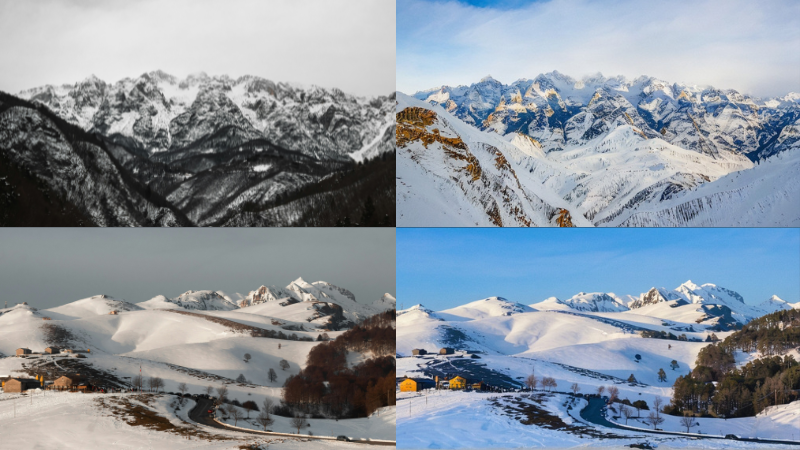
Historians, too, benefit from this technology, as it provides a more accurate emotional connection to the past. A photo of a war-torn city in black and white feels tragic. Still, in color, it conveys the raw reality of human struggle and resilience.
Breathing Life into Landscape Photography
Transforming Old Black-and-White Landscapes
Picture an old black-and-white photo of Yosemite National Park. The cliffs are sharp, the trees etched in shades of gray, and the river gleams like silver. It’s stunning, but incomplete.
Now, imagine the same photo brought to life—the granite cliffs glowing in soft browns, the pine trees lush and green, the river sparkling with a reflection of the blue sky. Suddenly, it’s not just a photograph—it’s an invitation. This is the magic of ImageColorizer in landscape photography.
It doesn’t erase the authenticity of the original photo; instead, it enhances it by unlocking the natural palette that was always meant to be there.

Capturing Emotions of Nature with Authentic Hues
Landscapes are deeply emotional. The calm of a green meadow, the drama of a stormy sky, the serenity of a mountain lake—these emotions come alive only through color. Black-and-white strips away some of that emotional power, leaving only form and contrast.
While that can be artistic, it’s often incomplete. By applying authentic hues, ImageColorizer restores landscapes to their full vibrancy. A sunrise without its warm pinks and oranges feels quiet, but with color, it becomes a symphony of light. A forest without its green tones may seem eerie, but adding them back makes it feel alive and full of hope.

How Colorization Enhances Depth and Perspective
One of the most significant advantages of color in landscape photography is the depth it adds to the scene. Colors create layers, guiding the viewer’s eye through the scene. For example, the contrast between a green valley in the foreground, blue mountains in the background, and golden light in the sky gives the image a three-dimensional feel.
When old landscapes are colorized, this depth returns. For photographers and enthusiasts, this transformation is invaluable. It’s not just about making the picture look “better”—it’s about making it feel real, layered, and alive.ImageColorizer, therefore, isn’t just about making things look pretty—it’s about reconnecting us with the soul of photography, giving both landscapes and architecture the vibrancy they deserve.

At the same time, the timeless charm of vintage black-and-white photography endures, evoking mystery and nostalgia as if we’re glimpsing another era through a narrow window. These images are powerful but incomplete, often leaving us wondering what the skies, buildings, and natural landscapes truly looked like in full color.
This curiosity drives the emotional impact of colorization, which goes beyond adding hues to old photographs—it restores the vitality of history itself.

Reviving Architectural Photography with ImageColorizer
Rediscovering Historic Buildings with Realistic Colors
Architectural photography is about more than just structures—it’s about history, culture, and human achievement. Black-and-white photos of historic buildings carry a solemn charm. Still, they often fail to capture the essence of these masterpieces fully.

For example, an old cathedral in grayscale may look imposing. Still, when colorized, the stained-glass windows burst into reds, blues, and golds, revealing stories that were previously hidden.ImageColorizer helps us rediscover architecture in a way that feels almost like time travel.
Ancient castles regain the earthy tones of their stones, old city streets reveal the colors of life that once filled them, and forgotten monuments glow with the dignity they deserve.
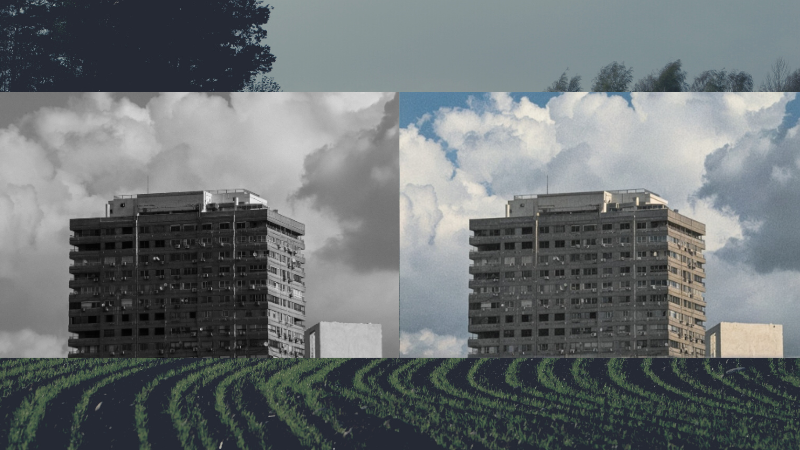
The Role of Color in Architectural Appreciation
Architecture is more than design; it’s a dialogue between space and emotion. The towering arches of a Gothic cathedral, the smooth curves of Islamic domes, the bold lines of modern skyscrapers—all of these forms already impress us in black-and-white. But when color enters the picture, the structures tell a deeper story. Take stained glass, for instance.

In grayscale, it’s just patterns. In color, it’s divine light spilling into sacred spaces. Or think about terracotta rooftops in Italy—black and white reduce them to repetitive shades, but with color, they radiate warmth, reminding us of Mediterranean sunsets and the hum of village life.ImageColorizer reintroduces these hidden dimensions.
By reviving colors that have long faded or were never captured in the first place, it helps us see architecture as its creators intended it to be seen.
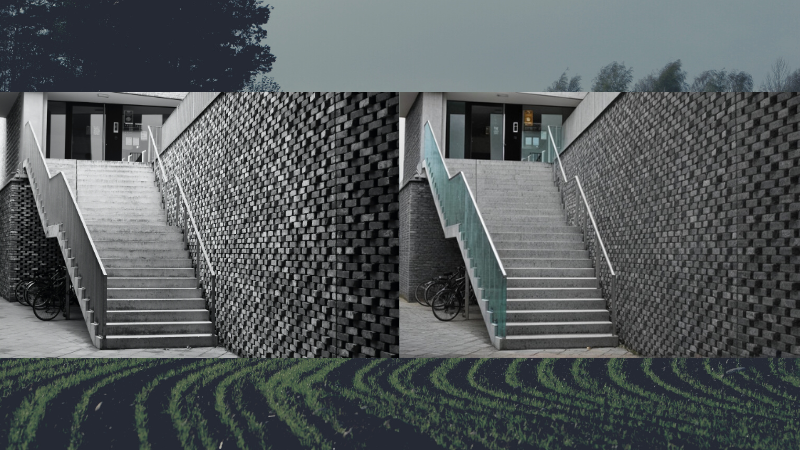
Why ImageColorizer Matters in a Fast-Paced World
Preserving Memory in an Age of Forgetting
We live in an era where photos are taken and forgotten within seconds as we scroll endlessly through our feeds. But ImageColorizer asks us to pause—to take a black-and-white fragment of the past and truly see it. In doing so, we preserve not just the image but the story, the emotion, and the humanity behind it.
Making the Past Relatable to the Present
Younger generations, raised on color-saturated media, often feel detached from monochrome images. By bringing color back, we create a bridge across time. Suddenly, history isn’t something abstract—it’s vivid, relatable, and emotionally resonant.
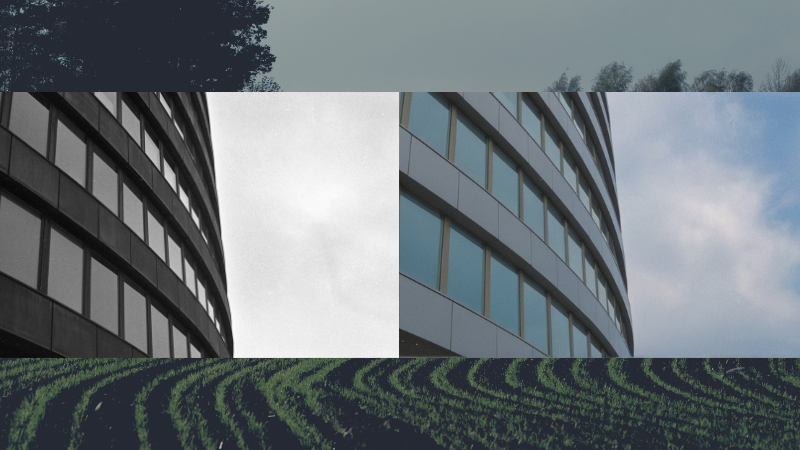
A Tool for Connection
More than anything, ImageColorizer is about connection—between past and present, between creators and audiences, between memory and imagination. In both landscape and architectural photography, this connection transforms simple photos into timeless narratives.
Conclusion – The Colors We Carry Forward
Photography is a form of memory, and memory is an emotion. When we breathe color into landscapes and architecture, we’re not just enhancing photos—we’re honoring the beauty of the world and the people who lived in it.
ImageColorizer is more than a technological tool; it’s a bridge between the silent past and the vibrant present, between what was and what could still be seen.
Whether you’re restoring a family photo, reviving a forgotten landmark, or reimagining nature’s wonders, colorization gives you the power to bring history back to life. And in doing so, you’re not just enhancing photography—you’re strengthening the way we see, feel, and remember the world.
